Working as a translator gives you the opportunity to use your foreign language skills in a professional setting, often with the added perk of living abroad. Whether you’re an experienced translator or just starting to use your multilingual skills in the job market, you’ll need to produce an impactful translator resume that helps your language skills to shine through. Are you ready to create a CV for translator jobs that stands out from the crowd? Read on to find out how.
Essential elements of a translator resume
As with any resume, the key sections and the order and format you present them in will depend heavily on where you’re applying to work. This relates partly to the type of role and industry, but more than anything, it depends on the country you’re applying to work in. Resume and CV conventions differ between countries — sometimes in clear and obvious ways, but other times more subtly — so it’s important to research the customs and conventions in the country before you send your resume.
However, there are some sections that you’ll want to include in your resume for a translator job, wherever you’re applying to work. These tend to be the following:
Resume header
Include your name and contact details (phone number, email address, location). Add your LinkedIn profile if you have one, and check the local customs to see if you’ll need to add any personal details or a photo.
Resume summary
Write a short paragraph outlining one or two of your key skills and career achievements, making sure they reflect the requirements listed in the job description. You may also wish to briefly mention your career ambitions or motivations.
Work experience
The most important section of any resume is usually the work experience section. In it, you’ll want to list any relevant previous roles and showcase the key skills and achievements that make you a standout candidate for the translator role. As such, show evidence of how you’ve made an impact in your career to date, and focus on highlighting key skills that match the job description.
Education
List your highest or most recent qualification, especially if you have any language-based qualifications or certifications that are essential for the role. If you’re a certified translator or have a degree in foreign languages, but you don’t yet have much relevant translator work experience, you might wish to list your education above the work experience section (using a functional resume format).
Skills
Your skills list is your chance to briefly summarize your most relevant key skills. Focus on showcasing your language skills and anything that highlights your ability to work in foreign cultures. As with your education section, your skills section can be placed above your work experience if you’re a junior, entry-level candidate and you don’t have much relevant employment history.
While it can be useful to mention soft, transferable skills in your skills list (especially for entry-level candidates), it’s usually more valuable to focus on technical skills. This is especially true if you’re an experienced translator. Highlight skills such as the use of CAT tools like MemoQ, Trados, Smartcat and Wordfast, localization platforms and any specialist areas of technical expertise.
Language skills
For a translator resume, it’s essential to confirm your language skills, so employers can get an impression of your proficiency in different languages. Use the Common European Framework of Reference for Languages (CEFR) to list your proficiency in the four main areas (speaking, listening, reading, writing) for each language you speak. The proficiency levels are as follows:
- A1-A2: Basic
- B1-B2: Independent
- C1-C2: Proficient
Whether you’ve received official accreditation of your level, or you’re using a self-assessment framework, it’s still best to include this level of detail so employers can clearly understand your proficiency level.
Optional sections to make your translator resume stand out
In addition to the core sections of your resume, there are several optional sections that you could add to make your translator skills stand out. The sections below can be valuable if you’re looking to showcase skills and experience that you haven’t gained through traditional work experience:
- Certifications: While you can list official language or translation certifications and qualifications in your education section, a separate certifications section could make them stand out more prominently. Include any relevant, recognized certifications or training that highlights your language and translation skills.
- Volunteer work: If you don’t have much relevant work experience, but you’ve gained foreign-language speaking experience from voluntary roles, mentioning it here can be valuable.
- Internships: Listing internships is particularly useful if you’re an entry-level candidate without much relevant work experience, and if your internship was in a translation role, or working for an organization abroad.
- Extracurricular activities: Listing extracurricular activities can give the recruiter or employer a stronger impression of your personality and qualities. If you have any interests or activities related to translation or foreign languages, such as travelling or living abroad for an extended period, it can be useful to mention those here.
Keywords to highlight your translation skills
To give yourself the best chance of success with your translator applications, you’ll want your resume to reference as many relevant keywords to the role as possible. Adding these throughout your resume can make it feel more relevant to the reader, and help you pass the application tracking system (ATS) automated screening stage, where software will scan your resume and assess its match to the job description.
You can get a good impression of the best keywords to include by reading the job description, and by looking up resume examples and job descriptions that match the job title. You may also wish to paste the job description into an AI assistant or chatbot, such as ChatGPT, and ask it to identify the most important keywords.
Some translation-related keywords to consider including in your translator resume include:
- Language proficiency
- Localization
- Interpretation
- CAT tools
- Proofreading
- Terminology management
- Project management
- Cross-cultural communication
- Specialist subject matter expertise (such as legal documents, medical translation or business reports)
Providing evidence of your translation skills
Alongside references to the most pertinent keywords, you’ll want your resume to provide evidence of your skills and achievements, so the reader can assess the impact you’ve made and the value you’ve added for employers in your career to date. It’s important to back up any skill you mention in your resume with an example of when you’ve used it in your career, and figures, data or evidence to show how it led to positive outcomes.
Here are some examples of resume bullet points for translator jobs with evidence to show your impact:
- Translated over 50,000 words per month with a 99% accuracy rate, as verified by independent proofreading audits.
- Increased efficiency of translation project turnaround, reducing lead times by 25% through optimized workflows using CAT tools such as SDL, Trados and MemoQ.
- Managed a localization project for a major e-commerce platform, providing French and Spanish translations and increasing international user base by 12% in the first two months.
- Delivered more than 10,000 words of translations per week for major clients in the tech sector, achieving a client satisfaction rate of 96%.
Localizing your translator resume
It’s critical to be aware of local customs and resume norms, so you can include all the necessary details in your resume regardless of where you’re applying for a job. Pay attention to local equalities laws and data protection regulations to understand whether you’ll need to include certain personal details, or whether it’s best to leave them off your resume.
In the UK, for example, the Equality Act 2010 means it’s best to leave any personal demographic information off your resume (such as age, gender, nationality or marital status). However, this type of information is often expected in other European countries. Some countries prefer candidates to include a personal photo, while others prefer them not to. Showing that you understand local resume and workplace conventions will help employers to evaluate your levels of cultural awareness, which can be valuable for a translator position.
It can also be useful to translate qualifications and certifications into their equivalents in the country of your target job, to help employers understand whether you’re qualified for the role. Similarly, ensure you’re familiar with local translations for job titles, as these aren’t necessarily always literal, word-for-word matches. For jobs in Europe, the Europass CV can be a great way to adapt your resume to meet the standards in the country you’re applying to.
Optimizing your translator resume for ATS
One of the key steps towards a successful resume for any job application is optimizing it for ATS systems. One of the key jobs ATS systems often handle for employers is the initial screening of resumes. ATS resume screening typically involves the system scanning and parsing your resume, assessing your likely fit for the role and ranking your resume against other candidates. This helps the hiring manager or recruiter to know which resumes to focus on in their screening.
As such, you’ll want to ensure your resume includes as many relevant translation-related keywords as possible. Higher keyword density is likely to help your resume rank higher against other candidates, so make sure you use as many words and phrases as possible that mirror the job description.
To give yourself the best chance of passing the ATS screening stage, you’ll also want to ensure your resume is well-formatted and matches established resume conventions. Keep your resume layout simple and professional and, if you’re applying in another language, be careful when translating your resume section headings, to ensure they’re accurate and match the norms of the country you’re applying in.
Final thoughts
Writing a resume that highlights your technical language skills and shows how you’ve used them to create positive outcomes can make you stand out in your translator job applications. Use keywords related to the job description and evidence your impact with figures and performance metrics wherever possible. Use a clear, professional resume template that allows your content to shine, and makes your resume as easy to scan and read as possible, giving you the best chance of success with your applications.






